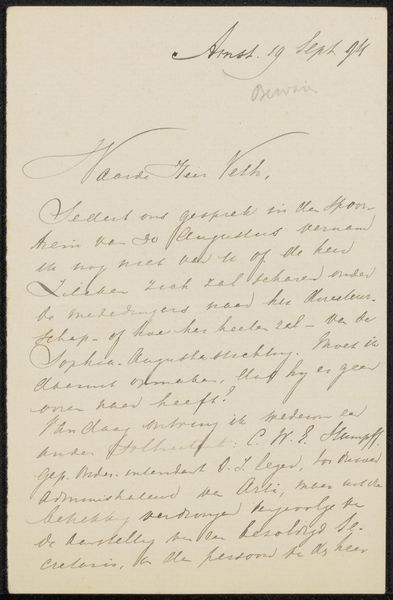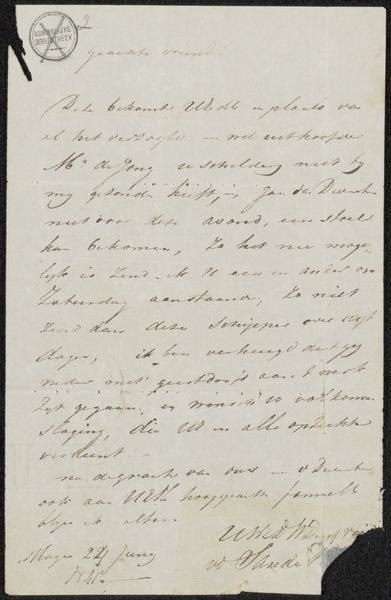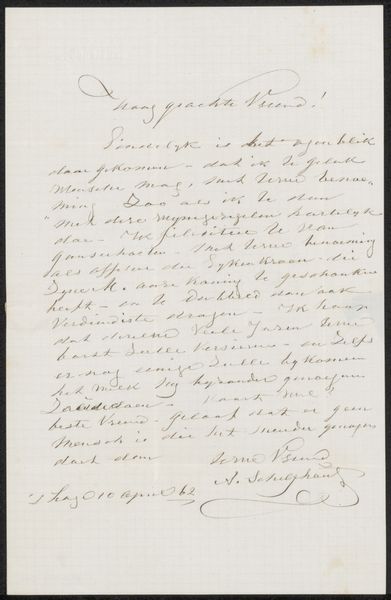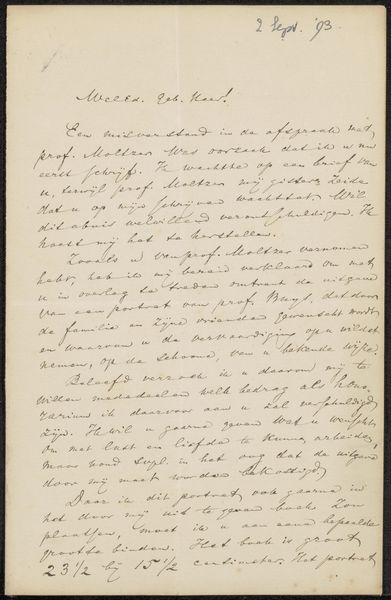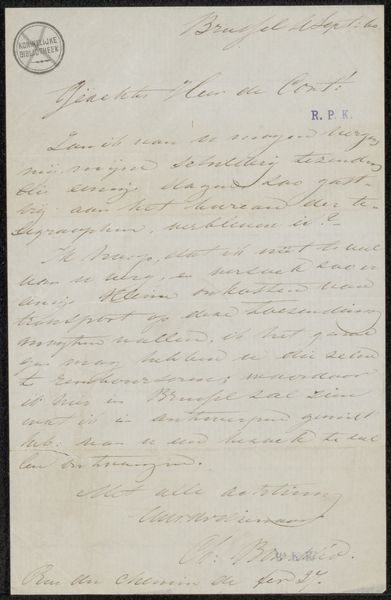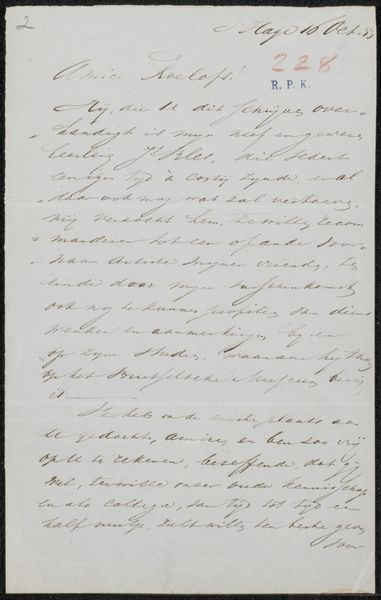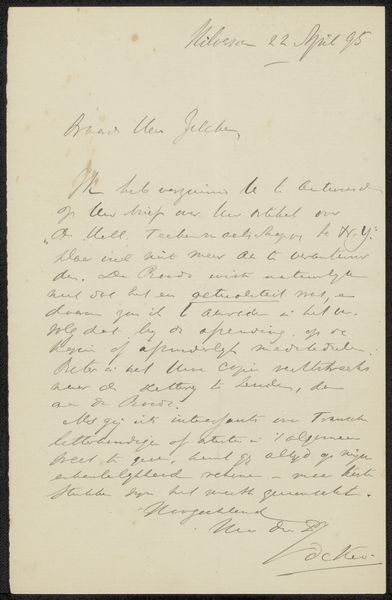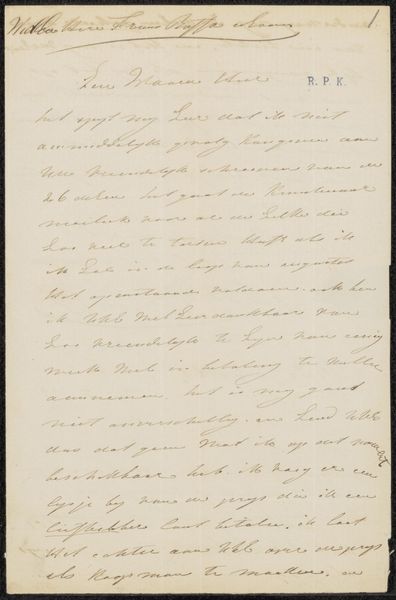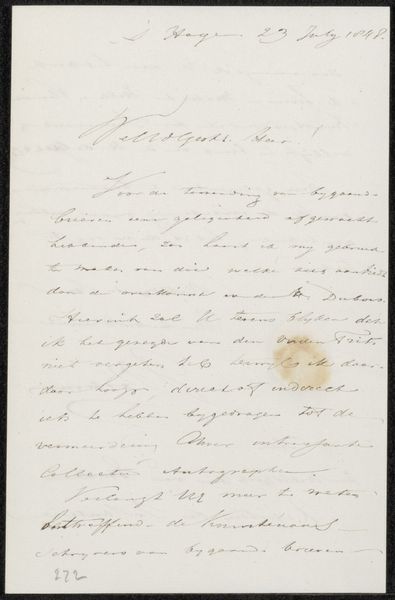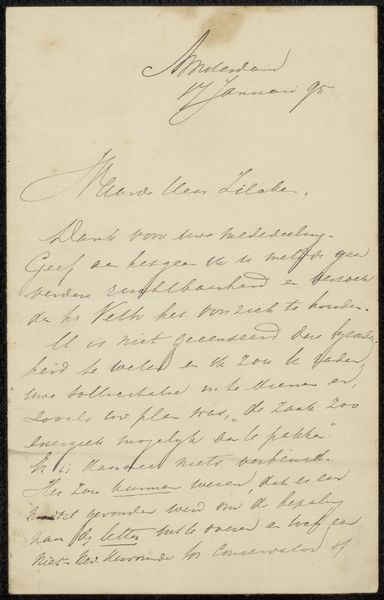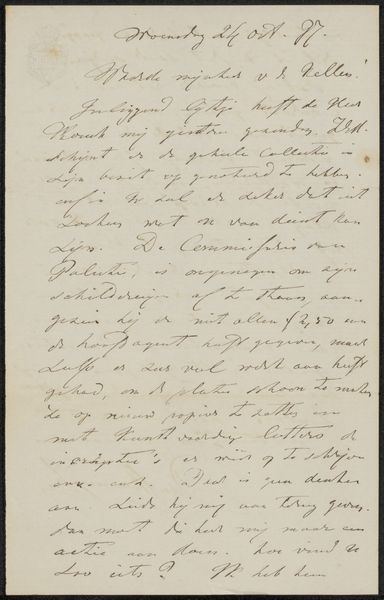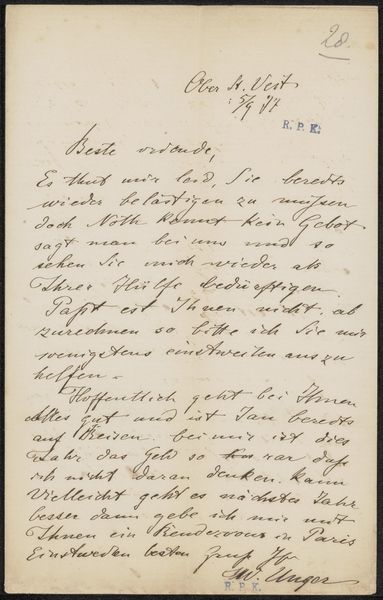
drawing, paper, ink, pen
#
drawing
#
hand-lettering
#
old engraving style
#
hand drawn type
#
paper
#
personal sketchbook
#
ink
#
hand-drawn typeface
#
ink drawing experimentation
#
pen-ink sketch
#
pen work
#
sketchbook drawing
#
pen
#
academic-art
#
sketchbook art
#
calligraphy
Copyright: Rijks Museum: Open Domain
Editor: Here we have “Brief aan August Allebé,” possibly from 1887, presented on paper using pen and ink. It looks like a handwritten letter. The elegant cursive gives it a formal, yet intimate feel, almost like glimpsing into a private conversation. What story do you think this piece is trying to tell? Curator: This work immediately invites questions about the role of correspondence in the 19th century. Consider it as a physical manifestation of social networks. It points to how individuals communicated, collaborated, and built their careers within specific artistic circles. Can we see any signs of the socioeconomic structures embedded in the art world of that time? Editor: I notice the letterhead; it seems official, bearing the name of the Rijksakademie van Beeldende Kunsten. Would that indicate this is something formal, perhaps professional correspondence? Curator: Precisely. Now think about power dynamics: who is writing to whom? What status does each individual hold? Is this a superior communicating to a student? A colleague reaching out to a peer? The letter becomes a historical artifact, revealing insights into the institution’s operational structure and the artist’s position within it. What can you read from the content of the letter? Editor: It looks like they are discussing finances, perhaps budgets for the coming year, maybe an overview for some water management work, but honestly the old handwriting is difficult for me to read. Curator: Well, it is definitely worthwhile to ask ourselves why a budget gets to be preserved like this? Does it say anything about art education and financial constraint back in the day? These textual components allow us to unearth deeper meanings related to labour, value, and institutional power. Editor: It's fascinating to consider a simple letter through such a multilayered lens. It definitely shifts how I see even mundane historical documents. Curator: Indeed. By examining art as part of a network of social and economic relations, we gain access to a far more comprehensive understanding of art history.
Comments
No comments
Be the first to comment and join the conversation on the ultimate creative platform.
